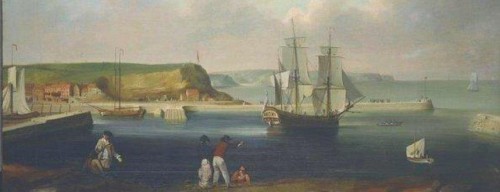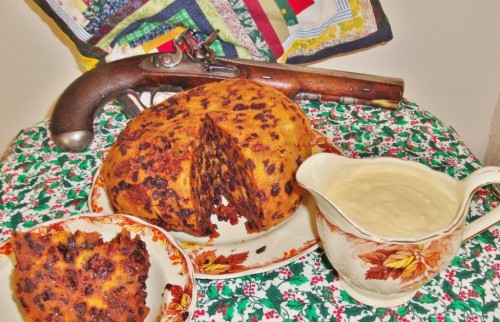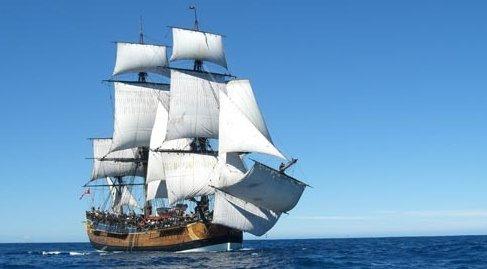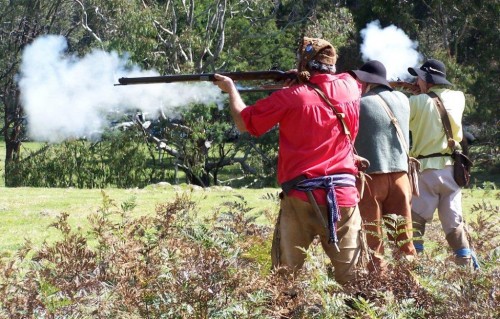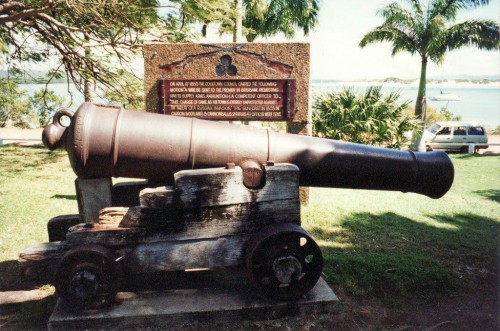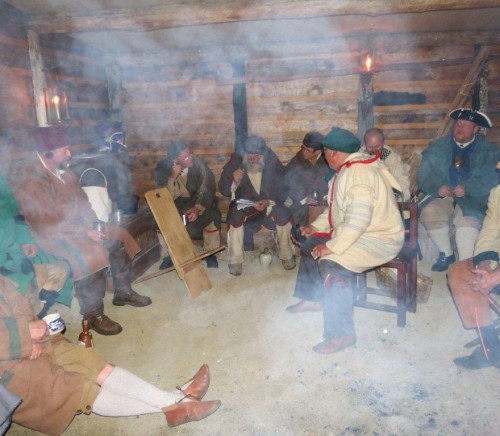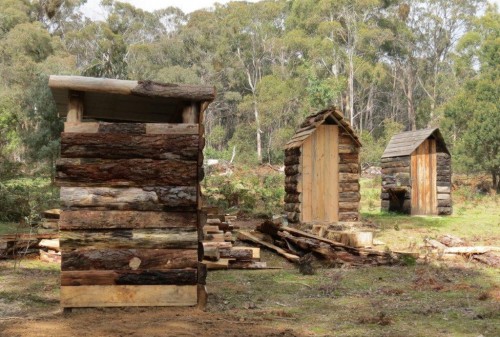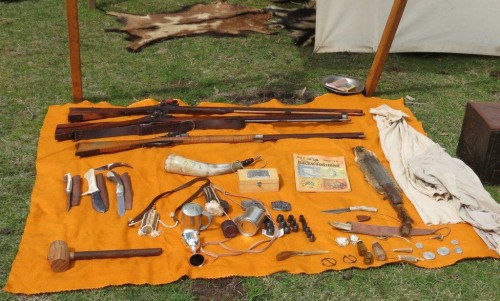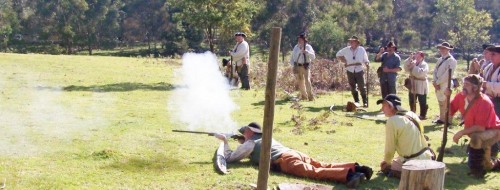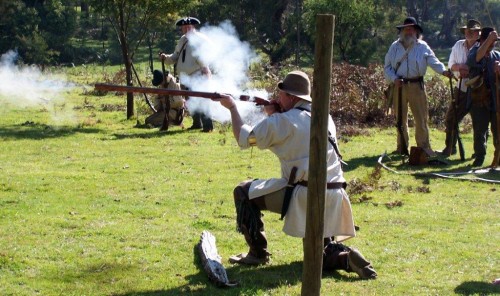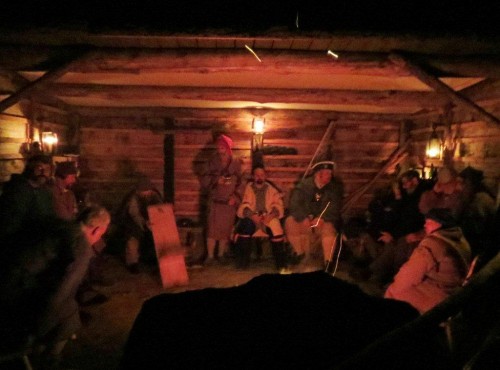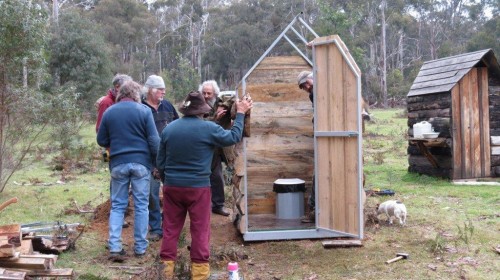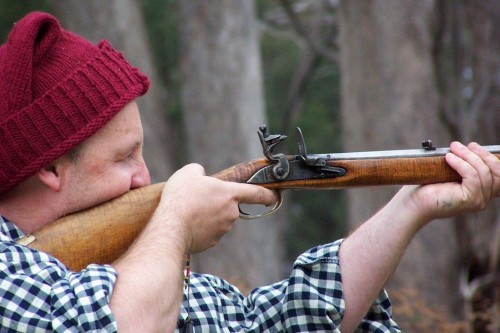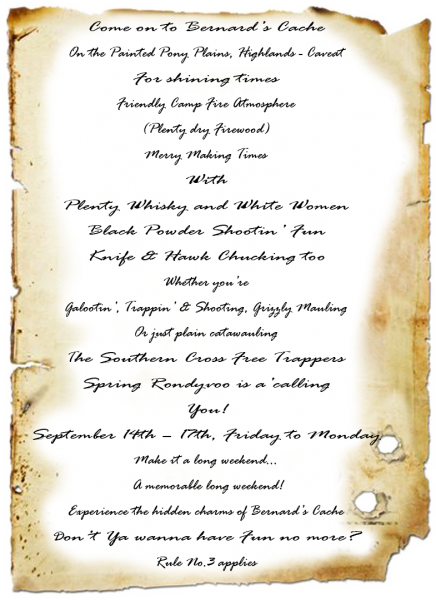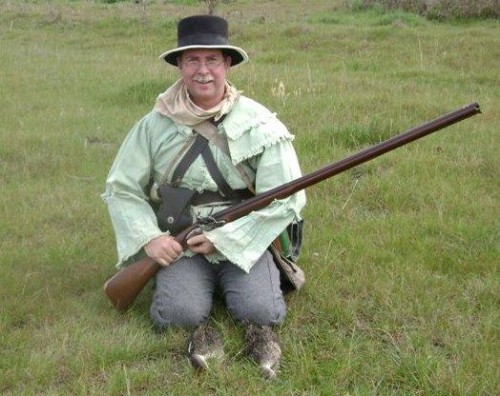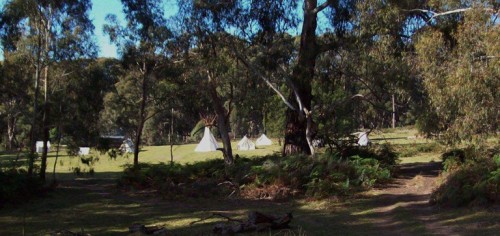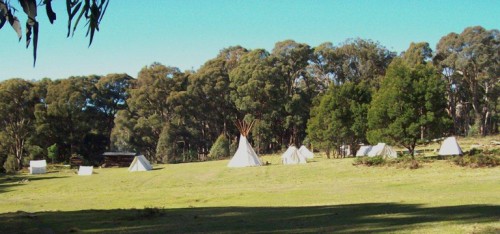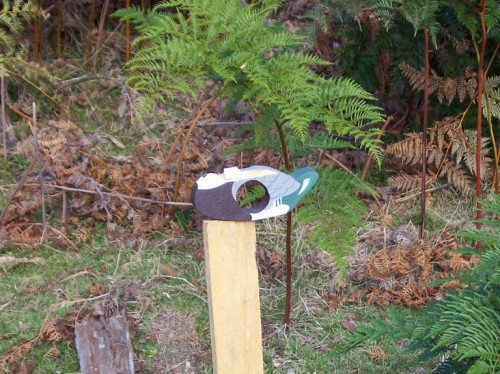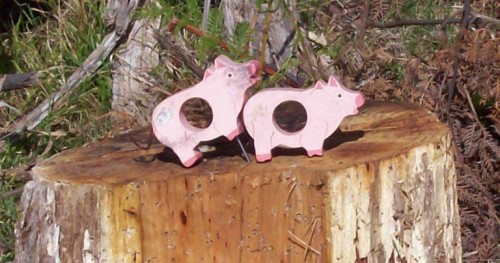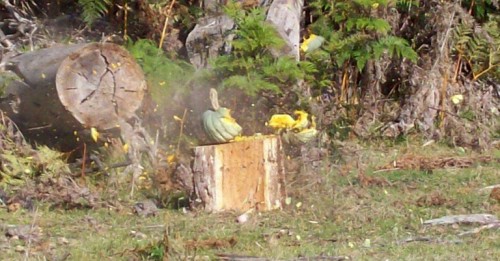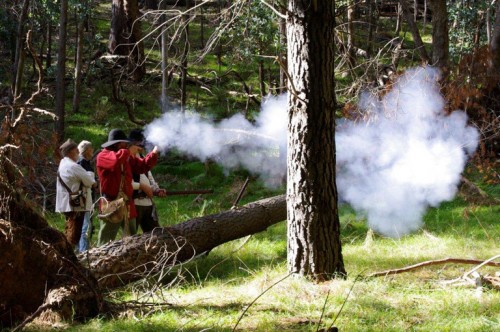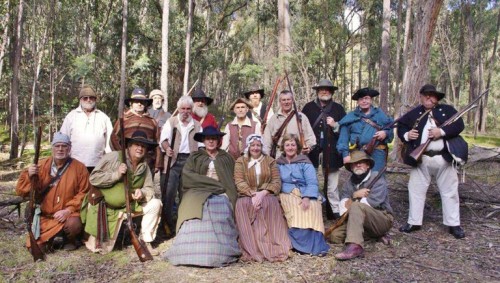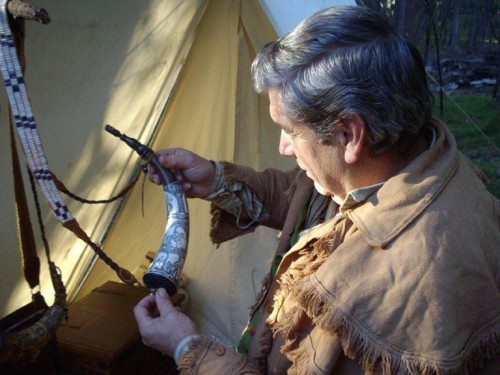Vol. 43, March 2013
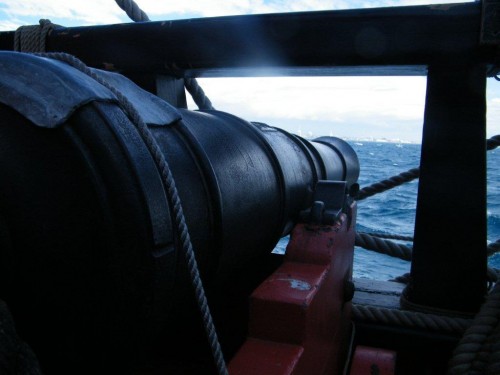
– a favourite pic from Terry “Red Dog” Weston, W.A..
Here we are at last – welcome to another read; now to explain the hiatus of printed news while lots of stuff has been happening – well, I have had some time-out to enjoy a special visit from one of my four sons. He normally resides overseas in Poland with his wife and two boys. Catching up after a ten year absence and meeting my younger grandson (9y.o.) for the very first time was wonderful, while his older brother has returned to Australia for tertiary studies. Family reunion took priority over Trapper doings.
Now then, after placing our previous Newsletter on the web we were rather chuffed to receive word (and photographs) from “Red Dog” in Western Australia and from two correspondents in the U.S.A. We’ve included a few lines from each to introduce readers to their excellent photos which we happily display in our gallery pages.
Terry “Red Dog” Weston writes:
Hi Trappers, one and all, Thank you for your continuance of sending me the newsletter. But to add to your current article on the Endeavour; when she came back to Fremantle here in the West, in November/December of 2011 and Departed for the world sailing championships on January 2012, I was fortunate to get on board for a sail off Fremantle and out to sea for a day.
Members of the Perth Muzzle Loading Club were present to witness Endeavour’s launch back in 1993, making lots of musket smoke and a little mayhem. We created our uniforms correctly and especially tailored for each of us of the 1800 Royal Marines, almost identical to the Marines with Capt Cook. I have attached some pictures for your perusal and insert on the newsletter.”

Jim “Sloe Bear” Douglass from Idaho also forwarded several photos he most recently took of Sweet Lake (Bear Lake) shrouded in mid-winter’s blanket. Also included were a couple of summer scenes featuring some mule deer that Jim calls his “Boys of Summer”. Regarding the Rondy’s of 1826, 1827, Jim has his own theory of the actual site location and submits some pertinent thoughts:-
I read with interest the article on the 1826 rendezvous here in Cache Valley (Willow Valley). I have read this account many times and still follow my feelings that the rendezvous was here in the northern part of the valley, just because of the Bear River being close by. If you go all the way to the southern end of the valley the Bear River is 15 to 20 miles from where the other site would have been. Going by what it takes to get supplies to a rendezvous the old timers would have sought the best and quickest way to deliver their goods which would have been by canoe on the river.”

Then, seeking a rather large round ball mold, I contacted Cannon Mike in the U.S. after coming across what turned out to be a 15y.o. old advert on the web. Mike has retired from cannon making but was very helpful and did not disappoint. He also shares a few photos from cannon shoots and of a Rondy of several years past; the tipi (interiors) belongs to his friend from Canada. Mike now prefers to play with cars and meets many Aussies and Kiwis at the Bonneville Salt Flats each year.
Additional photos from Red Dog, Sloe Bear and Cannon Mike can all be found on our gallery pages for January 2013. They add a new dimension to our regular Caveat camp scenes and we thank them each for sharing their experiences.
Cannon
Members will notice an emphasis on cannon appearing in our news and I’m sure all will approve. Grub-Box John’s feature of the 1827 Sweet Lake rendezvous carried the following line: “Jedediah Smith arrived at the rendezvous on July 3rd from his trip to California, and he was saluted by the firing of the cannon.”
Well now, several of your committee thought this a grand thing. Consider if you will a possible anniversary shoot each 3rd July. What do you all think? Should we have an annual “Salute to Jedediah” cannon weekend early each July? And, although seldom celebrated here in Oz, except by re-enactors – it’s almost Independence Day!
Seymour Alternate Farming Expo
Once again the Trappers supported Bob Ellis’ Bojo Canvas products at the Seymour Expo. Trapping beaver, otter and other fur bearers was, after all, the precursor to intensive farming of mink etc., so it’s quite appropriate that we re-enactors illustrate an early example of alternate primary industry.
The Expo is a wonderful opportunity to present a side of the shooting sports not often seen by the general public – arms and accoutrements of the black powder era, together with displays of antique traps, knives, tomahawks, foofaraw and such. Of course the backdrop of a massive 22 foot tipi, a covered wagon, and canvas tents together with appropriately attired club members helps to draw a fascinated and enquiring crowd.

Jim Walker was again the primary help to Bob in erecting all that canvas and assisting with the 28 foot long tipi poles. Jim also ferried in several hawk blocks and the all important gun rack to which our Public Place Permit was attached. Glen Mitchell once again set-up his exceptional visual display unit and ably assisted Bob and Jim over the weekend. Guns on display were provided by Bob and Jim and included Bob’s favourite conversation piece – the massive 2 bore flinter.
On Saturday, John Sultana and Michelle Barraclough put in a full day assisting with the constant stream of enquiries. Both Michelle and John dressed in fine examples of period costume and drew much interest from our visitors with many compliments on their appearance and overall effort.
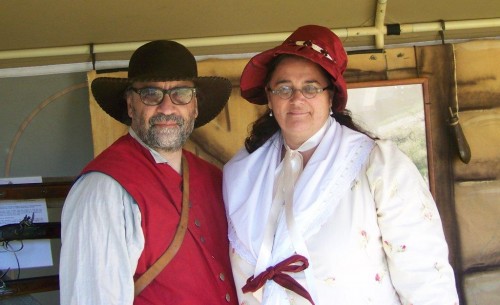
Best wishes to Owen who has given invaluable assistance over past years and is currently recuperating from heart surgery. Thanks to Bob, Jim, Glen, Michelle and John for making the effort; thanks to Lyn Gray for catering, support and assistance.
History of the Fur Trade Rendezvous. Sweet Lake Rendezvous 1828:
Continuing with Grub Box John’s précis.
As the mountain men gathered for the 1828 rendezvous at the south end of Bear Lake, some degree of excitement had gone. There would be no supply train this year since the supplies had been brought out late in the fall by Sublette and Jackson. The supplies, valued at about $20,000, had reached the mountain men in November, but most trappers had not received them until early spring. Some did not obtain supplies until the summer rendezvous. But even without the supply train, the mountain men still anxiously awaited the rendezvous.

courtesy Jim “Sloe Bear” Douglass.
A group of trappers under the direction of Robert Campbell, enroute to the rendezvous from Flathead country, had a run-in with the Indians just a few miles north of the rendezvous site.
…the Indians, who proved to be Blackfoot warriors, advanced, but were repulsed with the loss of several of their men killed, they would, no doubt, have ultimately succeeded in cutting off the whites, had they not have been so near the place of rendezvous, where, in addition to 60 or 70 white men there were several hundred Indians friendly to them, and the enemies to the Blackfoot’s…
Daniel Potts at the rendezvous site recorded the following…
a party of about 100 Blackfeet mounted, attacked 30 odd of our hunters with their family’s this engagement last for upwards of three hours when a couple of our men mounted two of their swiftest horses dashed through their ranks of their horrid tribe where the balls flew like hail and arrived with express at the camp in less than one hour a distance of more that sixteen miles. In this we had one man killed and two wounded one child lost. That of the enemy six or eight killed and wounded…
The rendezvous was held during the first part of July. Since there had been no supply train, it was up to the owner to get the furs back to St. Louis. This would be added work for the partners but would also mean higher profits. Ashley had been paying $3.00 per pound for beaver in the mountains, but now the partners would receive $5.00 per pound in St. Louis. The furs accumulated at the rendezvous represented 70 packs, consisting of; 7,710 pounds of beaver, 49 otter skins, 27 pounds of cestrum and 73 muskrat skins, Sublette sold the furs in St. Louis. They brought a total of $35,810, so after paying Ashley for the supplies, the firm had a surplus of $16,000.
Also arriving at the rendezvous was Joshua Pilcher and Company, supplied by the American Fur Company, with their few supplies. They had uncashed their supplies at South Pass and found them destroyed by water. They did succeed in salvaging some supplies and at the rendezvous were fortunate to trade for 17 packs of beaver.
The exact location for winter quarters is not known. But it probably was around the Big Horn and Powder River. It is known that David Jackson and Thomas Fitzpatrick had gone north to Flathead Lake for the winter and that Jedediah Smith was spending the winter at Fort Vancouver with Hudson’s Bay officials.
William Ashley in a letter to Governor Miller of Missouri on Dec 24, 1828, cited some interesting figures in regard to the fur trade…
the party of American hunters in that region, formerly in my employ consisted of about one hundred men, the proceeds of their labour, during the four years before mentioned exceeded two hundred thousand dollars, notwithstanding repeated heavy losses by Indian depredations…
During the same period of four years, from the best information I could obtain, the Hudson Bay Company has had employed in the same business and upon the same territory claimed by the United States west of the Rocky Mountains, about six hundred men, and we may reasonably suppose their success to have been equal to the one hundred in my employ, should that have been the case, the proceeds of their business in the course of 4 years, has exceeded twelve hundred thousand dollars…
Ashley also made some comments on the number of deaths which occurred during the preceding years….he (Sublette) reports the loss of eight of his party killed by the Indians last year and four missing who no doubt have been also killed. I have recently heard of the loss of eight men destroyed in the same way who together with 19 others have accompanied Mr Smith down the river Rio Colorado of the west… According to Ashley’s figures 39 people had been killed.
This figure is wrong, however. Smith had lost ten men to the Mojave Indians in 1827 which Ashley could have known about and fifteen to the Umpqua’s in 1828 which he could not have yet had word on. Eleven other men had been killed for a total of 36.
Thus with the close of 1828, plans were being prepared that would culminate with Sublette bringing the supply train to the mountains in the spring. Also the trappers who were scattered throughout the mountain were actively trapping the streams and rivers and making plans for their annual festival in the mountains.
In the next issue Popo Agie – Pierre’s Hole Rendezvous of 1829, watch yer top-knot, Grub Box John.
Membership Subscriptions due
A reminder to Club members of our annual subscription drive. See your hard copy newsletter for details and please pay early to ease our Treasurer’s book work.
Odd Spot
(Melbourne’s The Age newspaper Feb 28, 2013) “British police stormed a man’s home because his Facebook profile picture included a toy mortar. The Tewkesbury man posted a snap of an Action Man figure, unaware there was a toy mortar in the background. Five officers arrived after a tip-off.” Good gracious!
For Sale
If you know anyone looking for a quality flinter, George Mohr has several for sale. Also good bags, horns, maybe other stuff depending on what people want or need. George is thinning out his collection. No garage sale stuff! Contact George direct. flintlockpirate@westnet.com.au
Thanks to Johnny Cooper of Tennessee for notice of the video “Martin’s Station Rifle Project TEST”. A most interesting insight to that special gun making enterprise.
Gut Shot! A Good Read! He said…
(But definitely not for the squeamish)
Not everyone will have the stomach required for this brief story from Grub Box John. On June 6, 1822 Alexis St. Martin, at the fur trading post on Mackinac Island was accidentally shot with a musket at close range. The charge of the musket shot left a hole through his side that healed to form a fistula aperture into his stomach.
William Beaumont, a US Army surgeon stationed at a nearby army post, treated the wound. Although St. Martin was a healthy 20-year-old, he was not expected to recover due to the severity of his wound. Beaumont explains in a later paper that the shot blew off fragments of St. Martin’s muscles and broke a few of his ribs. After bleeding him and giving him a cathartic, Beaumont marked St. Martin’s progress.
For the next 17 days, all food he ate re-emerged from his new gastric fistula. Finally after 17 days, the food began to stay in St. Martin’s stomach and his bowels began to return to their natural functions. When the wound healed itself, the edge of the hole in the stomach had attached itself to the edge of the hole in the skin, creating a permanent gastric fistula.
There was very little scientific understanding of digestion at the time and Beaumont recognized the opportunity he had in St. Martin – he could literally watch the processes of digestion by dangling food on a string into St. Martin’s stomach, then later pulling it out to observe to what extent it had been digested. Beaumont continued to experiment on St. Martin off and on until 1833.
Alexis St. Martin allowed the experiments to be conducted, not as an act to repay Beaumont for keeping him alive, but rather because Beaumont had the illiterate St. Martin sign a contract to work as a servant. Beaumont recalls the chores St. Martin did: “During this time, in the intervals of experimenting, he performed all the duties of a common servant, chopping wood, carrying burthens, etc. with little or no suffering or inconvenience from his wound.”
Although these chores were not bothersome, some of the experiments were painful to St. Martin, for example when Beaumont had placed sacks of food in the stomach, Beaumont noted: “the boy complained of some pain and uneasiness at the breast.” Other symptoms St. Martin felt during experiments were a sense of weight and distress at the scrobiculuscordis and slight vertigo and dimness of vision.
(“dangling food on a string” Just the thought makes me feel I’m gonna puke! Primitive fishing might never be the same. Ed.)
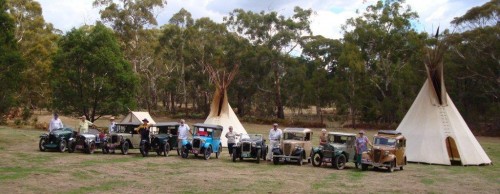
on the Painted Pony Plains, Caveat.
1830’s meet 1930’s
The Labour Day holiday weekend event was something entirely new for us. The Trappers would host a Sunday barbecue for members of the Austin 7 car club. We were most enthusiastic to display our 1830’s style camp, firearms and accoutrements, trade blankets and etc., and, with equal enthusiasm, the A7 folks would happily show off their marvelously restored little cars of approx 1930 vintage.
Unfortunately the extremely hot weather and recent dry spell meant that we must cancel plans to give the car folks a few shots of muzzleloader ball and black powder. The weather may have also been responsible for low numbers attending – from both clubs. On Sunday, nineteen Austin 7 members arrived in nine grand little cars but only nine pilgrims camped over the weekend to represent the Trappers.
Our visitors were Rob & Ivy Davis, Graeme & Bev Logan, Michael & Helen Shegog, Ted & Val Thompson, Robert, Janne & Fiona Humphreys, Len & Carol Kerwood, Ilona Booth & Margie Rosevear, Don & Jessie Smith, John & Joan Shiells. Trappers camping over were Bob Ellis, Ian Convey, John Sultana and Michelle Barraclough, Justin Fletcher, Chook Fowler and Jim Walker, plus Gary and Jenny Baker of the Frontiers Living History Group.
Everyone enjoyed a simple sausage sizzle luncheon of venison snags supplied by Glenn Gee while John Sultana, Gary Baker and Jim Walker slaved over the gas barby. As noted, the weather conditions destroyed any hope of our traditional campfire cooking. Our guests showed much interest in our tents and tipis, our clothing, arms and general paraphernalia.
The A7 folks were all keen participants in our 1830 activities. Their ladies lined up to compete in the hot sun for a rolling pin throw, a moccasin “gum-boot” throw and both men and women were very keen to try their hand at the knife and hawk block and at primitive archery. It really was a wonderful day. I wonder if we can arrange to have them re-visit us in the cooler months when we can safely burn some black powder.
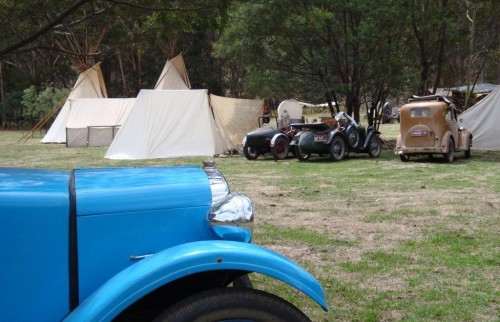
A number of chores from the working bee list were completed, providing easier access through farm gates and improving our rustic facilities. It was great to see Justin arrive in his recently restored FJ Holden Ute adding even more motoring interest to the weekend. Thanks also to Justin for the fine guitar playing and sing-along on Saturday night – we do appreciate this entertainment. See our gallery page for more photos of this camp and the Austin 7’s.
What’s Next?
March 29th to Apr 1st Easter – from Friday to Monday at Bernard’s Cache, Caveat. Our 2nd Hershel House split-the-ball Shoot – rocking chair position, plus new comps. “Wanna see it again?” Murray will be giving his usual demo on “running ball” by campfire. Michelle has donated some lovely time pieces to be won by skilled, lucky or devious shooters. All shoots are fun shoots and “Don’t ya wanna have fun no more?”
April 27th / 28th ANZAC weekend (Note the 25th, ANZAC day is the Thursday).
June 8th, 9th, & Mon 10th Queen’s B’day – Winter Quarters – Bernard’s Cache.
July – A possible “Salute to Jedediah Smith” cannon shoot.
August – Attend Beechworth’s Ned Kelly Festival. Tent display and dress 1880 style.
Spring R’voo – W’end of 3rd Sunday i.e. Sat 14th – Sun 15th Monday 16th September at Bernard’s Cache. (Note Sept 2013 has 5 Sundays again)
Quotable quote
“There is no purpose in studying history unless the lessons of the past are to influence present policy, and present policy can only have a basis in lessons of the past.” C.S. Forester
